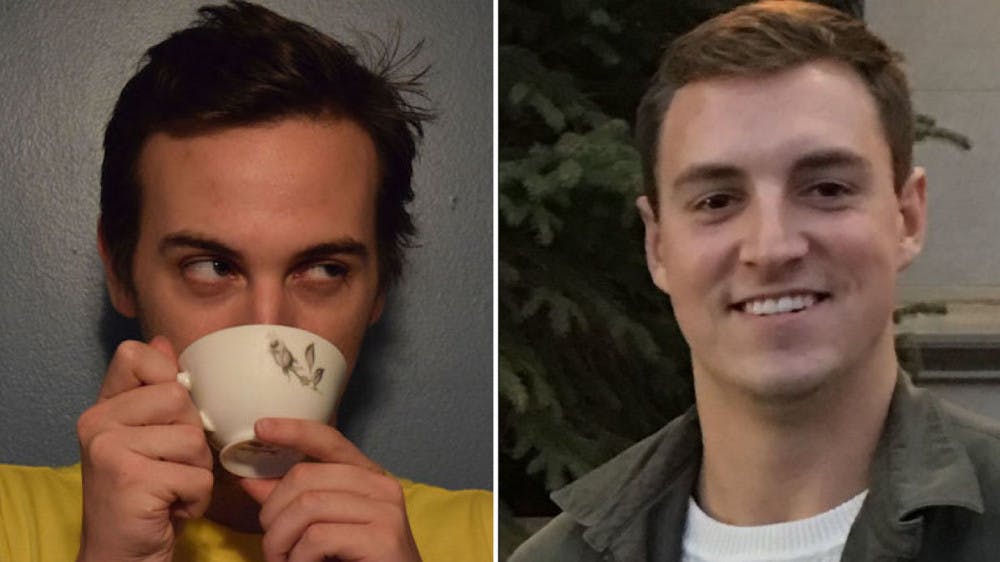
Nick Lingerfelt:Â We need to focus our attention on the producers of oxycodone
Several lawmakers have posited the solution to the opioid epidemic — more than 130 people overdose and die from opioids every day, according to estimations from the United States Department of Health and Human Services — is to go after the people who are addicted. That is not the way we need to deal with this issue.
Addiction is a disease and it needs to be treated as such. Portugal used to have a huge problem with people being addicted to heroin. In 2001, the country decriminalized the consumption of all drugs. According to the 2015 European Drug Report done by the European Monitoring Centre for Drugs and Drug Addiction, the drug-induced death rate has gone down to five times lower than the European Union’s average and was one-fiftieth of the United States’. More than 11 million people have misused prescription opioids in the U.S., according to the U.S. Department of Health and Human Services.
The best way to deal with opioid addiction is to shift the focus on opioid use from a crime to a disease. In Canada, there are supervised injection facilities where opioid users can use drugs in a safe environment. While this sounds like a radical idea, it provides a place where people can safely use drugs. If something were to go wrong, someone would be there to help. The idea we need to push is how we can help people recover from this disease rather than punishing them for a regrettable mistake they made that has gripped their life.
The Drug Policy Alliance said the benefits of supervised injection facilities include increasing entry into substance use disorder treatment, reducing the amount and frequency that clients use drugs, reducing public disorder and public injecting while increasing public safety, reducing HIV and Hepatitis C risk behavior that results from things like syringe sharing and unsafe sex, successfully managing frequent on-site overdoses and reducing drug-related overdose death rates, among other reasons. The DPA said there has not been one overdose fatality at any such facility in the world.
Tobacco advertisements used to be prolific in everyday life before the 1990s. Then, in 1998, the attorney generals of 46 states took down the four largest tobacco companies — Philip Morris Inc., R. J. Reynolds, Brown & Williamson and Lorillard — by making them pay for all the tobacco-related Medicaid expenses the states had incurred because these companies had made it seem like smoking had no consequences. This is known as the Tobacco Master Settlement Agreement, and this is the type of lawsuit that needs to be taken to the Sackler family, the owners of the pharmaceutical company, Purdue Pharma, that produces the modern version of oxycodone causing the opioid crisis. That’s where we need to focus our attention. They are complicit in the deaths of all the people who have gotten addicted to their drug. Even while this has all been going on, they have not taken steps to try to curtail some of the destruction their drug has caused.
I think we are all focused on the people abusing the drug, and that is misguided. Opioids are inherently addictive. It is the fault of Purdue Pharma and the Sackler family not only for inappropriately laying out the consequences of this drug, but also for pushing it on doctors to prescribe to their patients. Politicians have said they want to take on the opioid crisis, and I say they need to take down the Sackler family for how they got people addicted for profit.
Isaac O. Weston:Â Reform must start at the top and work down
Tennessee has been hit hard by the opioid epidemic. There were 1,186 opioid-related overdose deaths in 2016 in Tennessee, according to the National Institute of Health. The NIH also reported national average that year was 13.3 deaths per 100,000 people, but Tennessee had 18.1 deaths. Since 1999, opioid-related deaths in the state have increased every single year except for one where the number remained about the same, but the deaths that year was still higher than the national average. Â
“One reason opioid addiction is so common is that people who develop tolerance may feel driven to increase their doses so they can keep feeling good,†a Mayo Clinic article said. “When you take opioids repeatedly over time, your body slows its production of endorphins.â€
Opioid-related deaths in 2017 were over three times more than heroin-related and cocaine-related deaths and nearly five times more than methamphetamine-related deaths, according to the National Institute of Drug Abuse. That same year, the Centers for Disease Control and Prevention reported 46 people died every day from prescription opioids and over 28,000 Americans died from synthetic opioids.
I believe there are two reasons for this epidemic: We have glorified drug use in America, and we have valued money over human life.
Elvis Presley, Jimi Hendrix, Kurt Cobain, Chris Farley, John Belushi, Whitney Houston, Heath Ledger and Marilyn Monroe are some of the celebrities who died from drug overdoses before age 50. The most recent shock was 26-year-old rapper Mac Miller, who died from drug overdose on Sept. 7, 2018.Â
Reform can only come from holding the people responsible for this problem accountable.
Evan Hughes wrote a feature for The New York Times about the opioid crisis and wrote, “In 2007, three senior executives of Purdue Pharma pleaded guilty in connection with a marketing effort that relied on misrepresenting the dangers of OxyContin, and the company agreed to pay a $600 million settlement. But Purdue continued booking more than $1 billion in annual sales on the drug.â€Â
But here is where it gets corrupt.
“It turns out that many of the makers of the most dangerous class of drugs knew of the dangers, and like a pusher, drove the products into the U.S. market in any and every way they could,†said Aware Recovery Care, an in-home addiction treatment company.Â
Another reason for this continual success is doctors are pushing drugs onto patients in order to receive money under the table from big pharmaceutical.Â
“Put simply, doctors… were aggressively courted and got paid handsomely as speakers and consultants in exchange for prescribing opioids in its many forms,†Aware said. “Many of America’s largest drug manufacturers choose profits over human health and well-being; many physicians do as well.â€
When news breaks about a beloved celebrity dying from drugs, everyone takes a pause. We offer condolences and commemorate their lives and legacies then advocate for better solutions. It’s truly awful how these icons impact so many of us and achieve fame and fortune then die in such an inelegant and gauche way. Some celebrities before their deaths admitted having addictions to drugs and alcohol, yet rarely does someone confront this lifestyle, even if they are doing something that will only bring them harm. It isn’t until they ungracefully die, most of the time in some room completely alone, that we step up and claim there should be reform for people with mental health issues. Reform must start at the top and work down.






